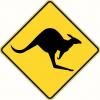Tonite, I was attempting to use my new Veritas Custom Jack to take the rock out of my endcap. The rock is corner to corner, the endcap is a purpleheart/maple/purpleheart sandwich. I was unable to get more than a couple of strokes before the blade would retreat back into the plane.
What's up with that? I've never encountered a blade that won't hold it's depth setting if the lever cap was cranked down enough. I thought I was cranking this one down, but... Seems to me that if I crank down enough to hold the setting, then I won't be able to adjust the depth. Not to mention the purported risk of damaging the plane itself by setting the lever cap too tight.
Bum plane? Bad technique? Mix? Something else?




 Reply With Quote
Reply With Quote







